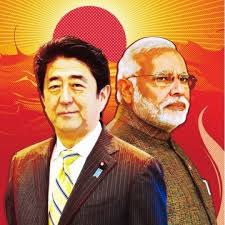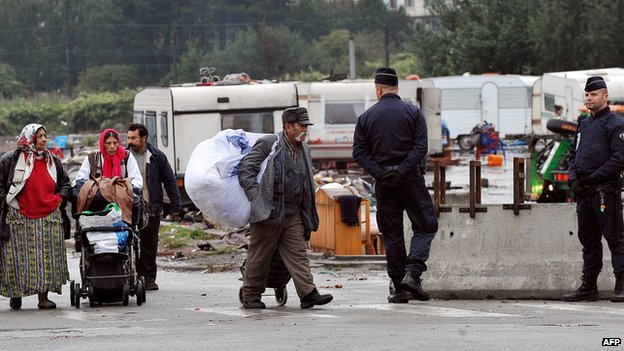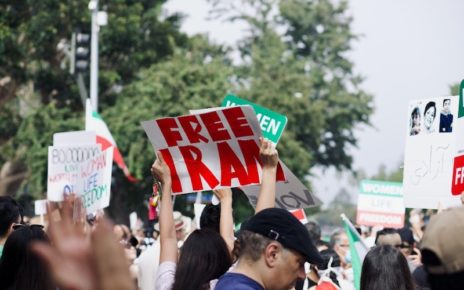The rise of the People’s Republic of China has in the last decade produced an increasingly fluid and unpredictable security environment in the Asia-Pacific region, which has led to the development of security and defence ties between Japan and India, largely on the basis of a strategic hedge against a more assertive Beijing. This relationship has come to be embodied by the warmth demonstrated between Indian Prime Minister Narendra Modi and Japanese Prime Minister Shinzo Abe.
A wider context is of course required and provides an interesting insight into the Indo-Japanese relations. Cordial ties between India and Japan are not a recent development. Ties between the two peoples date back to the 6th Century. The dominance of Buddhism within contemporary Japanese culture has its origins in the ideas brought to the Nippon archipelago from the Indian subcontinent via trade routes. These shared religious beliefs saw an exchange of ideas between the two since that period including folklore tales.
In the 20th Century, many Indians seeking to end British rule on the subcontinent celebrated the defeat of Russia in the Far East during the 1904 Russo-Japan War, the first such defeat of a European state by an Asian state during the period of colonialism. Indeed, during the International War Crimes Tribunals for the Far East, many on the political right of Japanese politics including Prime Minister Abe have not forgotten a now obscure Indian judge, Radhabinod Pal, the only Allied judge to deliver the sole dissenting vote on the guilt of Japan’s wartime leaders. He is included in Tokyo’s Yasukuni Shrine.
On January 26, 2014, Prime Minister Abe became the first Japanese head of government to attend India’s Republic Day celebrations and parade, invited by then Congress Party Prime Minister Manmohan Singh.
Cooperation between two of Asia’s largest economies and nuclear powers became increasingly pronounced throughout 2014. India invited the Japanese Maritime Self Defence Forces (JMSDF) to participate in the Malabar joint naval exercises held by the United States and India. This came at a time of constitutional change in Japan when the Abe’s cabinet voted to reinterpret Japan’s Article 9, allowing for collective self defense of Tokyo’s strategic allies.
On August 24, 2014, ahead of the India-Japan summit in Tokyo, both sides announced the upgrading of their strategic partnership to include joint, bilateral meetings between defense and foreign ministers. The so-called 2+2 dialogue, that Japan currently undertakes solely with the United States and Russia. A notable upgrade from the vice-ministerial talks established in 2010.
It was significant that Prime Minister Modi chose to go to Japan on his first major foreign visit, following the landslide election of the Bharatiya Janata Party in May. Upon arrival in Tokyo on the evening of August 31, Modi welcomed Abe not with a handshake but a jovial hug, which is a mark of enormous intimacy in Japanese culture and was picked up across social media.
The Mod-Abe summit in September saw Japan promise to double its Foreign Direct Investment (FDI) in India over the next five years. Japan and India agreed on September 1, 2014, to strengthen defense ties as Asia’s second and third biggest economies keep a wary eye on a rising China, with Prime Minister Narendra Modi warning about the “expansionism” of some nations and a “19th century mentality”. This comment, a reference to Beijing’s assertiveness on the East China Sea pleased Abe greatly.
Abe and Modi also agreed to speed up talks on a so-far elusive deal on nuclear energy cooperation, welcoming what they called “significant progress” in the negotiations. Nuclear power remains a problem area in Indo-Japanese relations for a number of reasons. Post-Fukushima, Japanese popular opinion is incredibly wary of nuclear energy; however India is planning to construct 18 more nuclear reactors by 2020. Given that Japanese manufacturers are considered the strongest contenders for the possible development of these reactors, this could give Japan access to a 9 trillion yen ($86.1 billion) market.
Japan wants explicit guarantees from India, which has not signed the nuclear Non-Proliferation Treaty (NPT), to limit atomic tests and allow closer inspection of its facilities to ensure that spent fuel is not used to make atomic weapons. Given the increased capabilities of the Indian Navy in terms of sea-based nuclear deterrent, this remains an uncomfortable area for Japanese policy makers.
The nuclear issue aside, however, we are witnessing increasingly close security ties between India and Japan. This relationship will be key to the future of the Asia-Pacific region and will most certainly transcend the governments of Shinzo Abe and Narendra Modi, becoming a keystone relationship in the 21st Century’s evolving security architecture.





